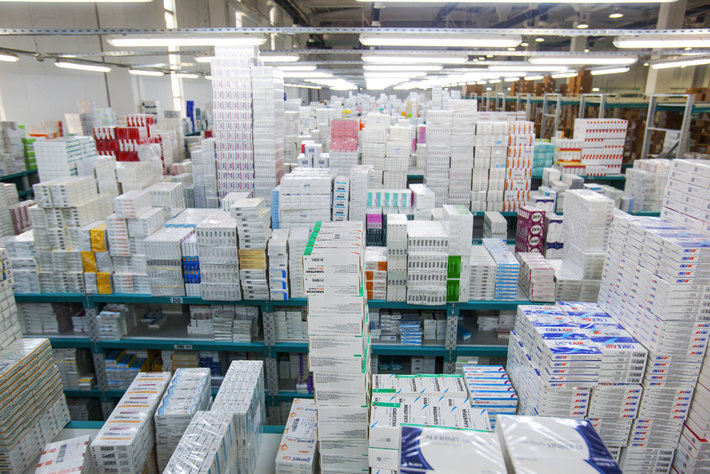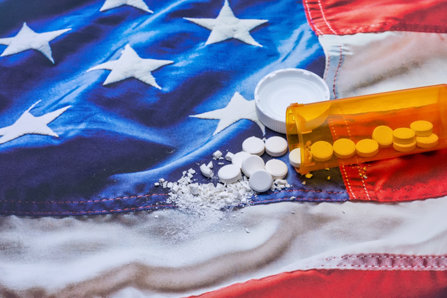An Overview of Nations, Looking at the Prescription Drug Problem on a Global Scale

Drug addiction in the United States is an expanding problem. While we might not want to admit it, much of what created the addiction epidemic we face today was the rapid expansion of the pharmaceutical industry, the lack of regulation in that industry, and the mass proliferation of addictive pharmaceuticals (such as opioid painkillers) into the hands of the American people.
Many organizations have warned us about the rising tide of prescription drug abuse in the U.S. The National Institute on Drug Abuse has published multiple research papers on the subject. The Centers for Disease Control and Prevention has labeled the addiction issue an epidemic in several of their writings. The President of the United States himself designated the opioid problem a “National Public Health Emergency” in 2017. Despite this, little has been done by the government to ease the problem.
No one doubts the fact that the United States is in dire straits when it comes to addiction, and a lot of this has its source in prescription drug abuse.
A Look at Prescription Drug Addiction in the United States
It doesn’t take much effort to find a great deal of startling information on the country’s drug problem. A cursory search of CDC data reveals that an increase in the manufacture and prescribing of prescription opioids in the early 2000s is what set off the opioid addiction epidemic we struggle with today.
This same report states that in 2017 the total number of people who died from opioids (including prescription painkillers) was six times higher than it was in 1999. In fact, from 1999 to 2017, almost 400,000 people died from overdoses on opioids. That includes illegal use of opioids, of course, but a significant percentage of the 400,000 deaths are regular Americans dying from overdoses on medicines that are supposed to be helpful.
Analysis of data released by the National Institute on Drug Abuse reveals similar information. According to NIDA, about 18 million people misused prescription drugs at least once in 2017. The fact that our prescription medicines even have the capacity to be misused is an inherent flaw in their makeup (more on that later).
According to NIDA, 2017 was also a big year for first-time users, i.e., individuals who just started experimenting with prescription drugs. The data suggests that 2 million people misused pharma drugs for the first time in 2017. That comes out to 5,480 people getting high off of prescription drugs for the first time every day.
Perhaps what is most surprising here is the fact that the American people seem to go about life as though thousands of deaths every year from prescription drugs is a normal thing. Can we take a step back from this for a minute?
- Pharmaceutical companies make a wide range of prescription drugs that are supposed to help patients with health conditions.
- Many of these medicines have positive effects.
- Some of the medicines, namely prescription opioid pain relievers, can have harmful effects.
- Thousands of Americans die every year from overdoses on prescription drugs that are supposed to help them.
If we were outside observers looking at another society, and we saw that the society was making, marketing, and selling a substance that was advertised as being incredibly beneficial and helpful but which in fact killed a certain percentage of those who used it, we’d consider the society completely illogical and even insane in this regard.
Yet, we do allow substances which are harmful to be made, bought, and sold legally. Tobacco comes to mind, as does alcohol, fast food, candy, junk food, etc. But the difference here is that tobacco and other unhealthy substances are widely known to be harmful. Prescription drugs are supposed to be lifesaving medicines that make patients’ quality of life better. But in actual fact, a lot of these “medicines” kill thousands of people every year.
The U.S. Stands Alone (Mostly) in the World for Its Degree of Prescription Drug Addiction

I thought it would be interesting to zoom the camera lens out a bit, to look at how other nations address pharmaceutical companies, prescription drugs, opioid painkillers, regulations on pharma companies, etc.
The Our World in Data group compiled information from the World Health Organization, the U.K. National Health Service, the National Institute on Drug Abuse, and other groups to create a comprehensive assessment of world drug problems. Consistently, the United States scored at the top or very near the top for drug problems, especially when measured against other wealthy nations. Countries which uniformly levied heavy regulations on opioid prescribing, such as the U.K. and Italy, consistently had lower drug addiction statistics.
An article written by Steven Reinberg and published in WebMD compares the U.S. drug overdose problem with that of other nations. The report pointed out the hardships the U.S. faces, but the article concluded with some profound insight on what sets the U.S. apart from other nations in the pharmaceutical sector.
“The researchers said the epidemic is being driven by factors that include fee-for-service reimbursement systems and linking doctors’ pay to patient satisfaction…”
Quoted from the article: “The researchers said the epidemic is being driven by factors that include fee-for-service reimbursement systems and linking doctors’ pay to patient satisfaction. Other factors include commercial hyping of the opioid painkiller OxyContin (oxycodone), American attitudes about pain and medicine, and the lack of substance abuse treatment. In the United States, only about 10 percent of addicts receive treatment.”
So we have a series of circumstances where our powerful medical system promotes the use of addictive pharmaceuticals—even pushing these drugs on people who don’t need them. Doctors are further incentivized to prescribe the medications when patients ask for them by complaining of physical pain, mostly because doctors fear that their patients will leave poor reviews if they don’t.
Our country also allows for the mass promotion and hyping of addictive painkillers. The United States and New Zealand are the only countries in the world which enable direct-to-consumer marketing of pharmaceutical drugs. That leads to patients making decisions on which drugs they want to take before they even see a doctor. There was a brief article in Reuters that talked about how completely wrong that is.
Last but not least, a decisive factor which leads to more deaths from both prescription drugs and illegal drugs is the extreme lack of addiction treatment in the U.S. Other countries have bad drug problems too, but it seems that other nations tend to push treatment as being the most workable solution.
In the U.S., on the other hand, we tend to try to “medicate away” drug addiction instead of focusing on treating the problem at its source through residential rehab. We put addicts in outpatient AA and NA meetings when what they need is residential treatment. We send an opioid addict to a doctor’s office for buprenorphine when what he needs is a full detox and residential care. When addicts don’t get the right treatment, they are more likely to die from their habit.
Getting out of our drug crisis is going to take a great deal of effort across several fields—all of which are fields that require change. One thing we can all work on together—as a group—is to insist that those around us who struggle with addiction get the right help, i.e., support from residential drug and alcohol addiction treatment centers.
Sources:
- https://www.usnews.com/news/national-news/articles/2017-10-26/donald-trump-officially-declares-opioid-crisis-a-public-health-emergency
- https://www.cdc.gov/drugoverdose/epidemic/index.html
- https://www.drugabuse.gov/publications/research-reports/misuse-prescription-drugs/what-scope-prescription-drug-misuse
- https://ourworldindata.org/substance-use
- https://www.webmd.com/mental-health/addiction/news/20190221/us-leads-rich-nations-in-drug-overdose-deaths
- https://www.reuters.com/article/us-pharmaceuticals-advertising/u-s-doctor-group-calls-for-ban-on-drug-advertising-to-consumers-idUSKCN0T62WT20151117


 ®
®